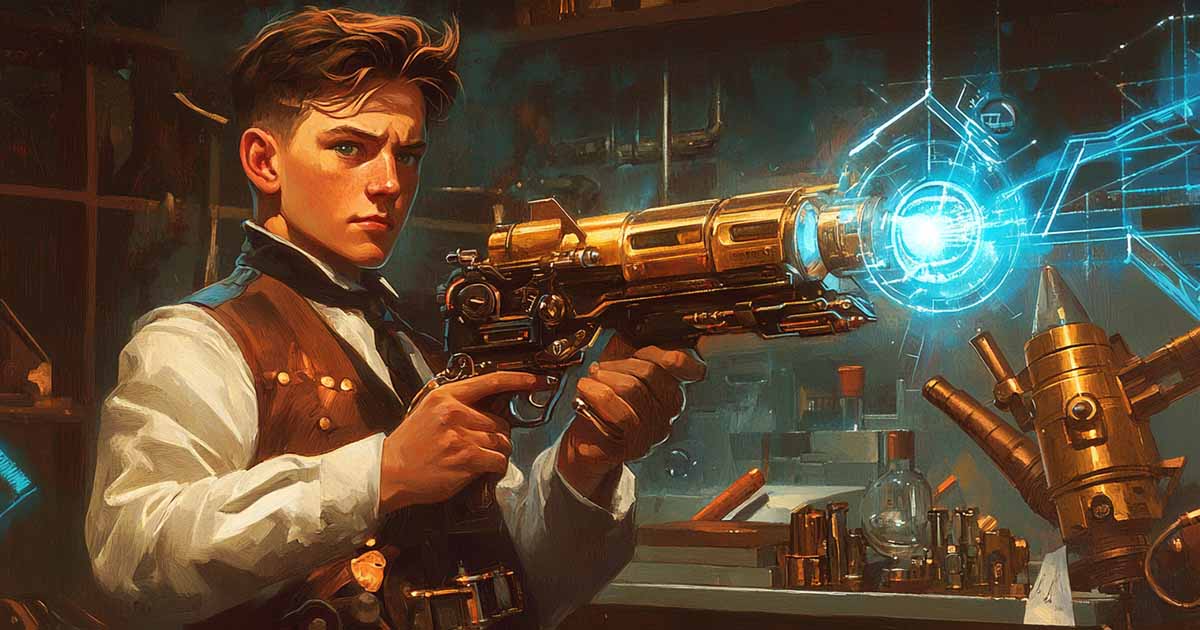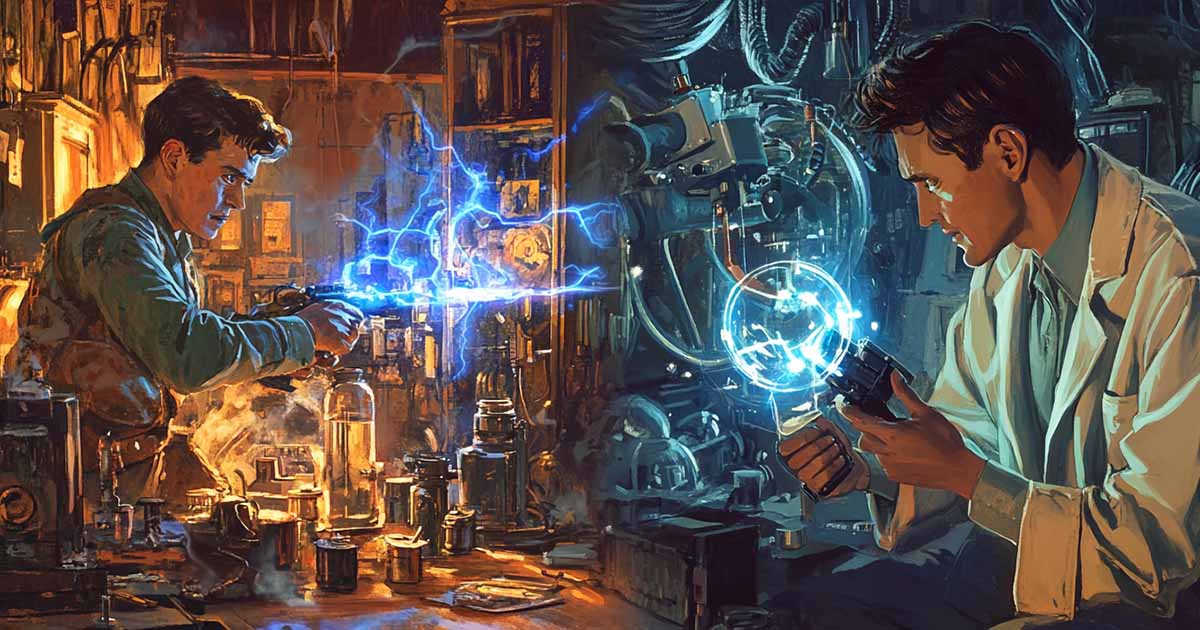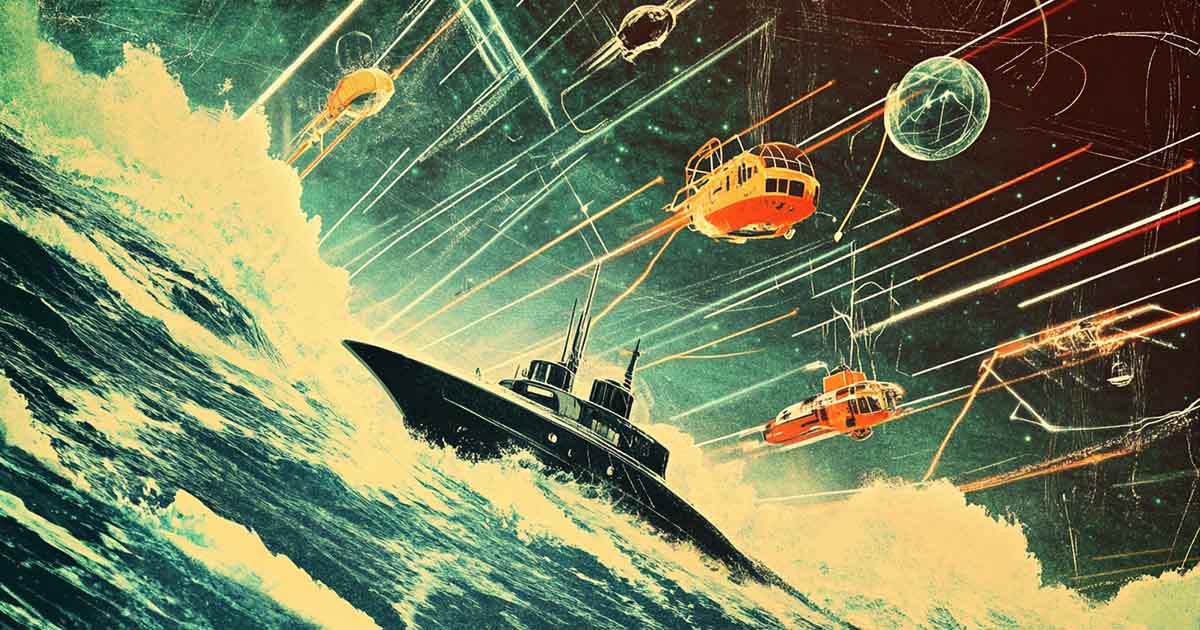How Tom Swift Inspired the TASER
A look at how the fictional invention in the 1911 novel “Tom Swift and His Electric Rifle” inspired the real-world TASER, bridging pulp adventure and modern technology.

How a century-old adventure novel helped spark one of the most recognizable inventions in modern law enforcement.
In the crowded pantheon of early 20th-century adventure heroes, Tom Swift occupies a curious place. He was not a spacefarer like Buck Rogers, nor a grim detective like The Shadow. Instead, he was a boy inventor, the kind who could cobble together a submarine in his workshop before dinner.
One of his more unusual creations, introduced in the 1911 book “Tom Swift and His Electric Rifle,” fired a concentrated electric charge at distant targets. It was a plot device meant to thrill readers, but it would become the unlikely inspiration for a real-world invention more than half a century later.
From Boy Inventor to Real-World Engineer
The modern TASER owes its name and partial concept to that pulp creation. In the 1970s, NASA researcher Jack Cover developed a non-lethal weapon designed to incapacitate without killing. As a boy, he had read about Tom Swift’s rifle and never quite forgot it.

When the time came to christen his own invention, he borrowed the hero’s initials—Thomas A. Swift’s Electric Rifle—and crafted the acronym TASER. It was a quiet nod to a fictional hero who never aged, even as the world around him changed.
The technology of Cover’s TASER differed significantly from Swift’s imagined device. In the novel, the electric rifle projects energy directly, as if electricity were as obedient as a flashlight beam.
In reality, Cover’s design relied on small darts connected to the weapon by thin wires, delivering a high-voltage, low-amperage shock. Fiction offered the dream. Physics and engineering supplied the compromise. Yet the conceptual DNA is clear enough that Tom Swift’s creators might have felt a twinge of pride.
The Long Tradition of Fiction Turning to Fact
The link between pulp invention and practical engineering is neither rare nor accidental. Early science fiction provided a sandbox where authors could speculate without worrying about manufacturing tolerances or battery efficiency.
Readers absorbed those ideas, carried them into adulthood, and sometimes found themselves in positions to make them real. Submarines, helicopters, and even handheld communicators were all once the stuff of pulp pages before engineers brought them to life. The TASER simply joined that distinguished procession.

When Fiction Meets Reality’s Complications
There is also an irony in the TASER’s lineage. In “Tom Swift and His Electric Rifle,” the weapon is an unambiguous force for good, wielded by a clean-cut inventor whose adventures always reinforced order and justice.
In the real world, the TASER became a tool for law enforcement, stirring both praise for its non-lethal potential and criticism over its misuse. The electric rifle’s journey from boy-inventor fantasy to police belt holster shows how the real world often reshapes a fictional idea to fit its own messy requirements.
For readers of Science Fiction Classics, the TASER story is a reminder that science fiction does not merely predict gadgets. It shapes the imaginations of those who will later build them.
Somewhere, a teenager reading a dog-eared paperback may be absorbing the blueprint for tomorrow’s breakthrough. Whether it is a starship drive or a medical scanner, the seed may already be planted, waiting for the right inventor to bring it out of fiction and into fact.

